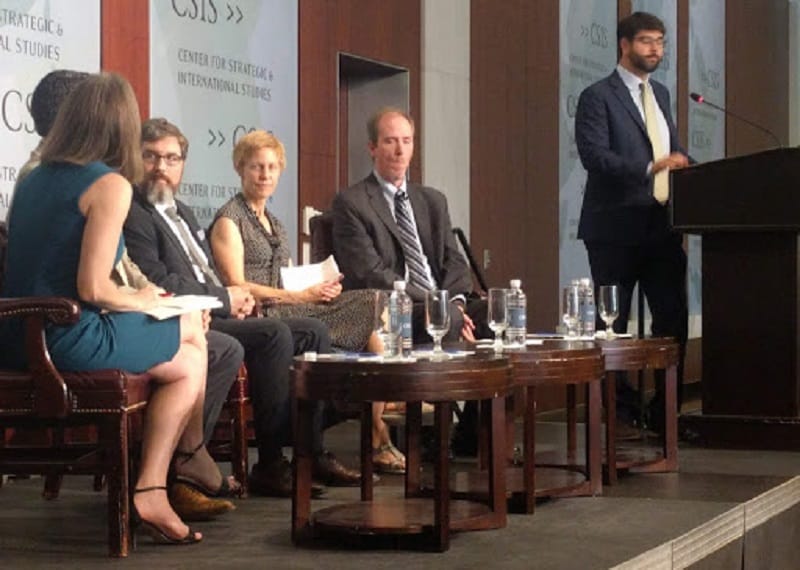5G Innovation is Contingent on Collaboration Between the Public and Private Sectors, Experts Say at CSIS Event
WASHINGTON, July 31, 2019- 5G innovation is contingent on collaboration between the public and private sectors, said experts at the Center for Strategic and International Studies on Wednesday. There are many physical and logistical vulnerabilities with 5G deployment, said Director of the Cybersecuri

WASHINGTON, July 31, 2019- 5G innovation is contingent on collaboration between the public and private sectors, said experts at the Center for Strategic and International Studies on Wednesday. There are many physical and logistical vulnerabilities with 5G deployment, said Director of the Cybersecurity and Infrastructure Security Agency Christopher Krebs. It is important that the U.S. remain in the forefront for 5G and spectrum deployment, he said.
Network security is national security, said Federal Communications Commissioner Geoffrey Starks. As 5G continues to grow, so will the number of interoperable devices around the world, he said.
The key is to develop a fast and flexible 5G network that is also mindful of security risks, said Krebs. Manufacturers must determine what vulnerabilities 5G inherits from past wireless networks and limit the adoption of untrusted mechanical equipment.
At its core, 5G is a network with different layers, said Jason Boswell, head of security at Ericsson. In addition to the main network, there is radio access network and a transport layer responsible for inter-application communication. As wireless networks become fully virtualized, he said, the lines between these layers become increasingly blurred. In turn, this leads to the need for higher risk-inflection calculations.
Securing 5G networks is vital to the innovation of the Internet of Things, said John Godfrey, senior vice president of public policy at Samsung. By collaborating with the private sector, the U.S. can set the standards for 5G adoption, he said. As a result, IoT devices can spread more quickly and ubiquitously.
Yet the “race to 5G” is not about being the first country to deploy the spectrum, said Kim Hart, managing editor at Axios. Rather, the goal should be to use virtualized networks to install a series of deployments that test this technology.
No single carrier or government agency will be the main provider of cellular infrastructure, she said.
When thinking about ways to proliferate 5G innovation, its international landscape should also be considered. Countries involved with 5G should implement transparent and fair digital principles to prepare for deployment, said Ambassador Robert Strayer, deputy assistant secretary for cyber and international communications at the U.S. Department of State.
It is in America’s best interest to determine that critical 5G infrastructure is not disrupted, said Strayer. The EU is also doing its part in conducting network security assessments of individual member states.
The U.S. needs to remain engaged with the EU and other allies by coordinating plans to secure 5G, he said. Particularly they should work on implementing a deterrence strategy in response to malicious state activities.
“The government has grown increasingly uncomfortable with having certain Chinese telecom equipment coming into our infrastructure,” said Starks.
Naturally, Strayer adds, the U.S. is concerned about the influence that the Chinese state department exerts over its telecommunications companies. In order to maintain a leading role in 5G development, U.S. government must understand that Chinese tech companies have little control over how their data is used. This detail is important in the way Chinese vendors impact the U.S perception of the race to 5G.
The key, he said, is to demystify 5G’s basic components and ensure that no single entity is monopolizing 5G deployment.
(Photo of the CSIS event by Masha Abarinova.)











Member discussion